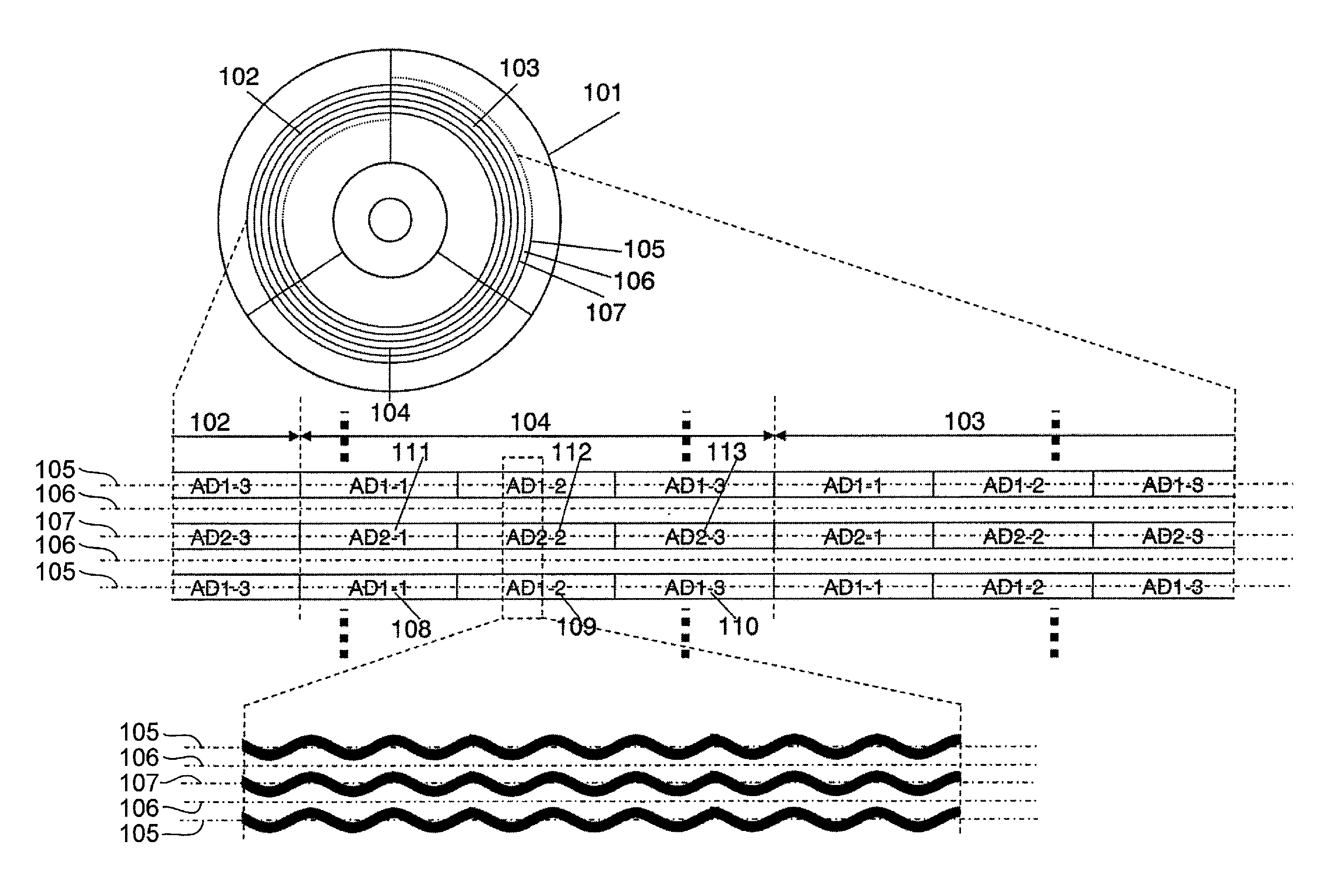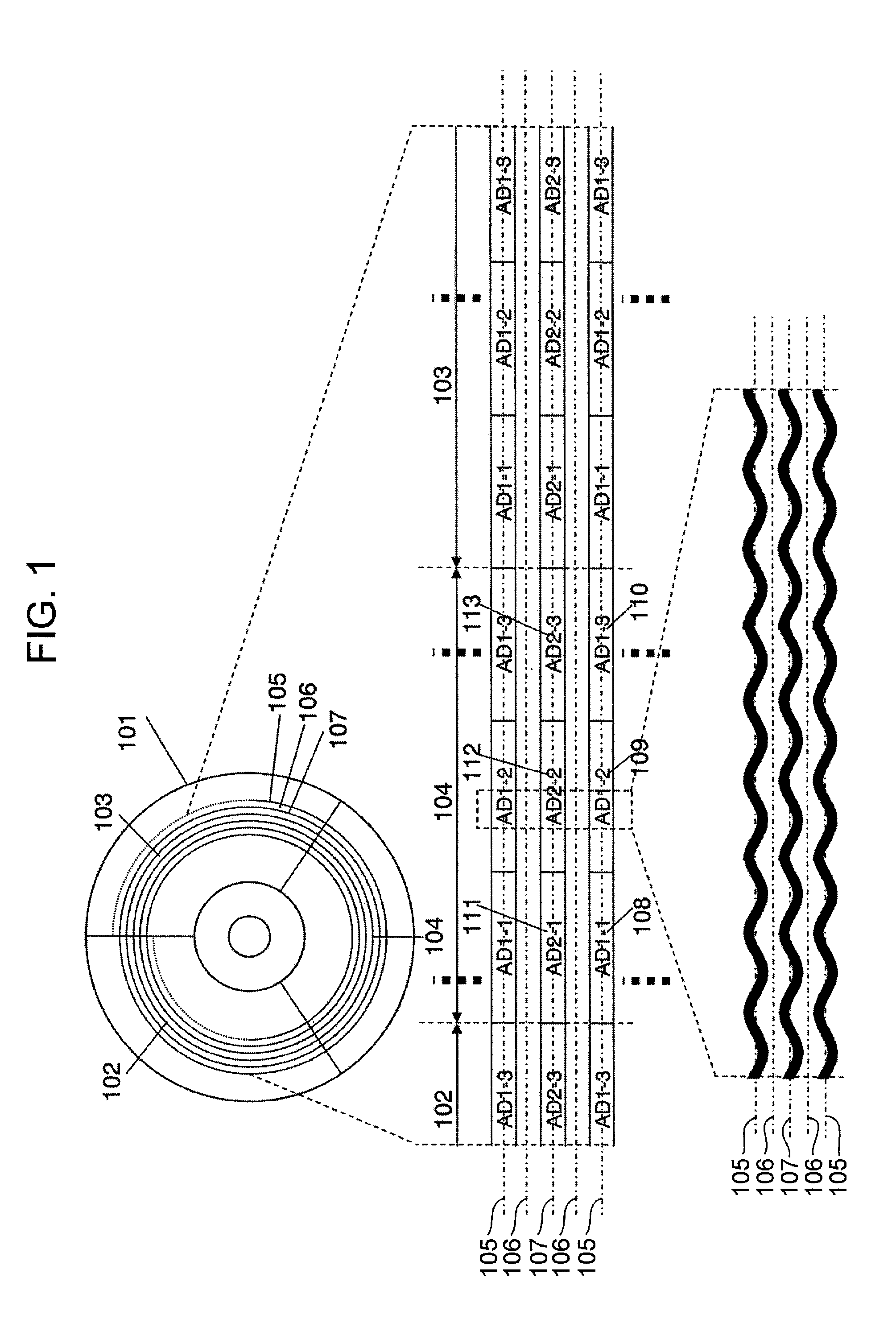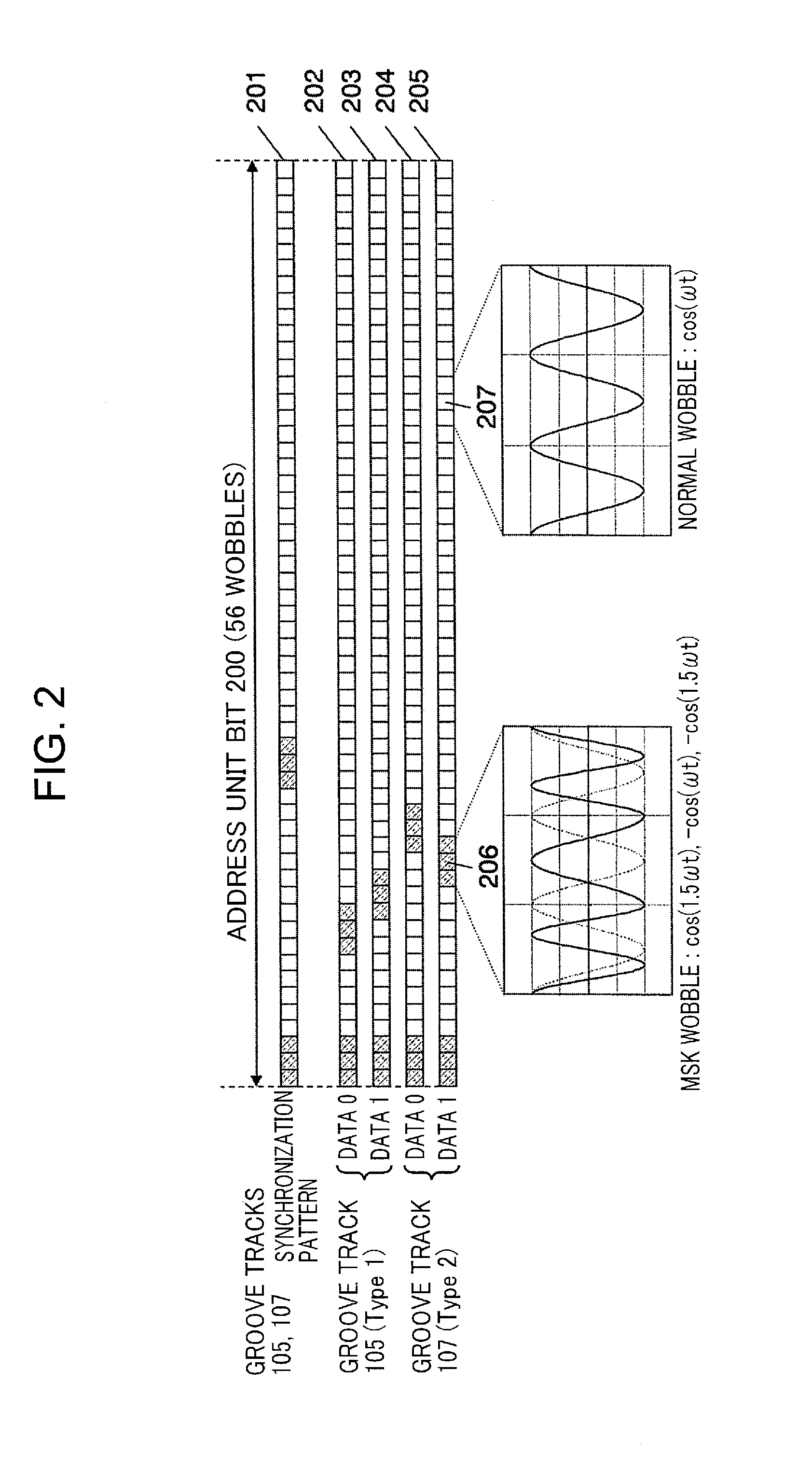Optical disk recording medium, optical disk device, and recording method
a technology of optical disk and recording medium, which is applied in the direction of optical recording/reproducing/erasing methods, instruments, and recording signals, etc., can solve the problems of address data not being multiplexed in the data recording area, the amount of data that can be stored per volume is only around 13 of that of an hdd or a magnetic tape, and the amount of data that can be stored per volume is only around 13 of that of an hdd or
- Summary
- Abstract
- Description
- Claims
- Application Information
AI Technical Summary
Benefits of technology
Problems solved by technology
Method used
Image
Examples
first embodiment
[0057]FIG. 1 is a diagram for describing a format of an optical disk recording medium according to a first embodiment of the present invention. In FIG. 1, an optical disk recording medium 101 has recording layers on both sides. Moreover, while only one of the sides of the optical disk recording medium 101 is shown in FIG. 1, the other side shares the same structure. A groove track 105 and a groove track 107 are recording tracks formed by grooves on the optical disk recording medium 101. A land track 106 is a recording track formed by a land on the optical disk recording medium 101. Address groups 102, 103, and 104 are formed by dividing the groove track 105, the land track 106, and the groove track 107 by straight lines that extend radially from a center of the optical disk recording medium 101.
[0058]Moreover, although the optical disk recording medium 101 is configured so as to have recording surfaces on both sides according to the present first embodiment, the present invention is...
second embodiment
[0126]While a second embodiment of the present invention has basic functions for recording or reproducing data that is similar to those of the first embodiment, the second embodiment is capable of further improving recording reliability of the first embodiment. Since the optical disk recording medium used in the first embodiment has address groups 102, 103, and 104 radially allocated in a radial direction, the number of pieces of address information in one track circumference is the same between an inner circumference and an outer circumference of the optical disk recording medium. For example, the number of pieces of address information in the first embodiment is nine. However, the further towards the outer circumference of the optical disk recording medium, the larger the data areas in which recording is to be performed. This means that address information with respect to data amount is reduced in an outer circumferential portion of the optical disk recording medium in comparison ...
third embodiment
[0139]As described earlier, there is a conventional problem in that when recording data on or reproducing data from an optical disk recording medium having recording surfaces on both sides as shown in FIG. 18, it is difficult to simultaneously record data on or reproduce data from both recording surfaces even when using an optical disk device that is equipped with an optical head for each of both recording surfaces.
[0140]With respect to this problem, an optical disk device according to a present third embodiment is capable of simultaneously recording data on or reproducing data from both recording surfaces of an optical disk recording medium that is constructed by simply bonding together two optical disk recording media having a same structure. This is achieved only by an optical disk device according to the present third embodiment which is capable of recording data or reproducing data even if address information and recording data on the optical disk recording medium do not have a...
PUM
 Login to View More
Login to View More Abstract
Description
Claims
Application Information
 Login to View More
Login to View More - R&D
- Intellectual Property
- Life Sciences
- Materials
- Tech Scout
- Unparalleled Data Quality
- Higher Quality Content
- 60% Fewer Hallucinations
Browse by: Latest US Patents, China's latest patents, Technical Efficacy Thesaurus, Application Domain, Technology Topic, Popular Technical Reports.
© 2025 PatSnap. All rights reserved.Legal|Privacy policy|Modern Slavery Act Transparency Statement|Sitemap|About US| Contact US: help@patsnap.com



